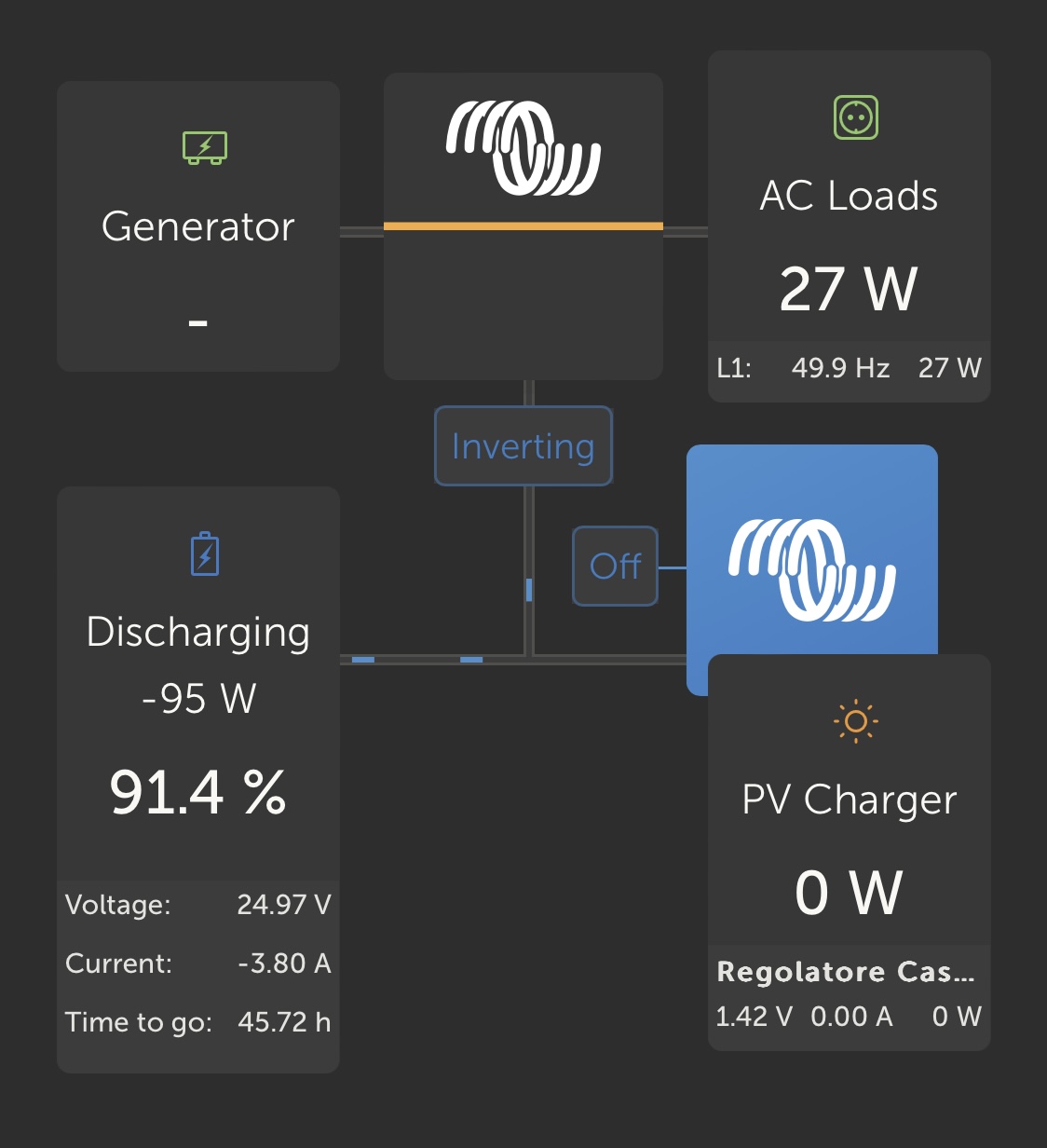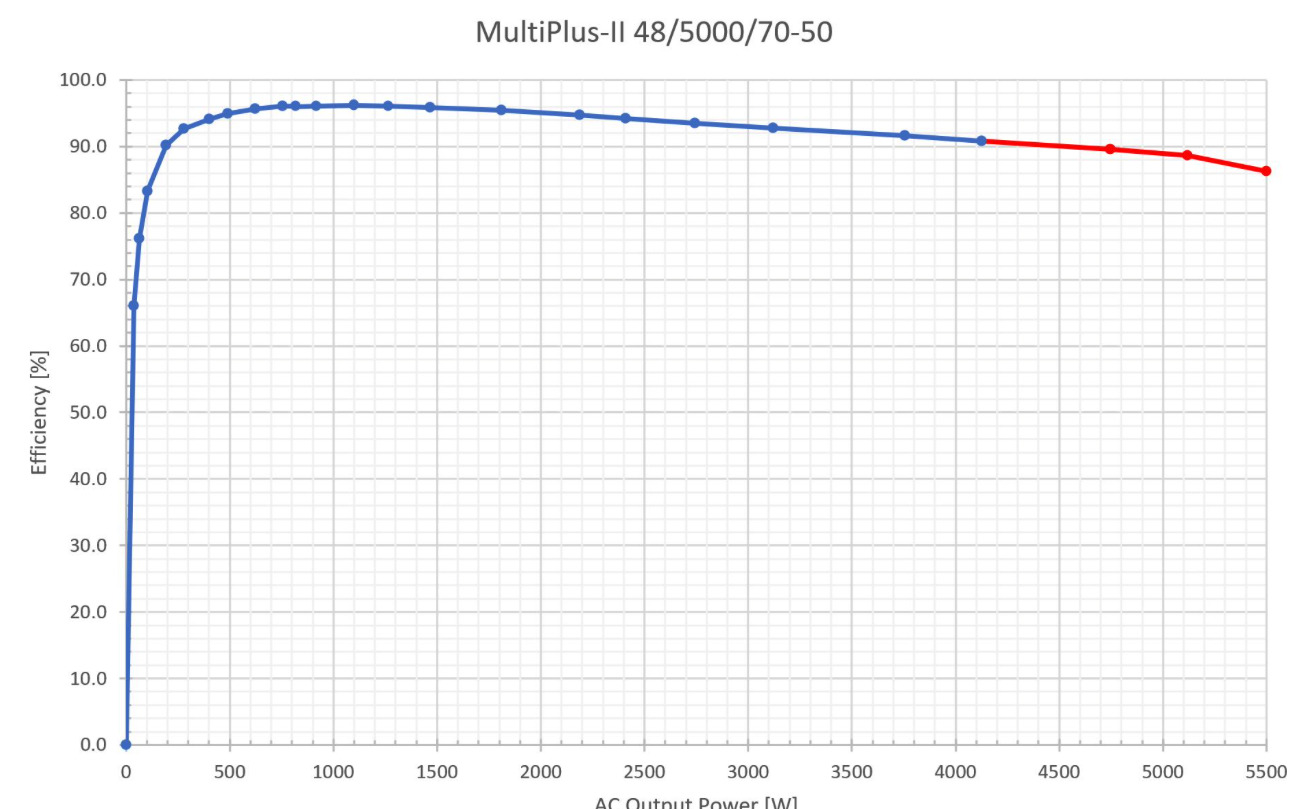Hello everyone,
I have a problem with my easy solar 2 gx device (24V system), on a standalone solar system (no connection to grid)
During the night, AC loads are 27 watts (only a router and a camera), but battery discharging is around 100W.
Self consumption of easy solar should be 13W, and the integrated mppt smart solar should be OFF.
I have 4 batteries Opzs of 150Ah, connected in series and parallel.
Cables are very short (less than 2m) and are of the recommended section (50mm2).
More than so, I have a battery shunt, but I don’t thing it have a big self consumption.
On AC Loads I have lights and sockets, but during the night are not in use.
Could someone help me to understand where could be (and maybe how to find/measure) the lost of energy?
Thank you in advance!


